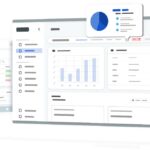The world of automotive ECU tuning is constantly evolving, and accessing and modifying your engine control unit (ECU) is often the first step. For many modern vehicles, especially those utilizing Bosch EDC17 ECUs, reading the ECU via the standard OBD2 port can be challenging due to built-in security measures. This is where ROM booting comes into play.
Bosch EDC17 ECUs are widely used in various car brands, including models from manufacturers like Great Wall, Chery, Geely, MG, and more. While OBD2 is the go-to interface for diagnostics and some basic ECU operations, it often falls short when it comes to deep reads required for tuning or cloning EDC17 ECUs. Manufacturers implement anti-tuning protection, making direct OBD2 reading of the full flash memory difficult or impossible.
ROM booting, also known as boot mode or BSL (Boot Strap Loader) mode, is a technique to bypass these security measures. It forces the ECU into a special programming mode, allowing tools to establish a deeper connection and read the ECU’s memory directly, even when OBD2 access is restricted for full reads. This process typically involves applying specific signals or voltages to certain pins on the ECU’s circuit board, effectively overriding the normal boot process and enabling full read and write capabilities.
To ROM boot a Bosch EDC17 ECU for OBD2 reading, you will generally need specialized equipment. This includes:
- An OBD2 flashing/tuning tool: Tools like those from Autotuner, CMD Flash, or similar professional-grade programmers are essential. These tools often have protocols and guides specifically for EDC17 ROM booting.
- A stable power supply: Maintaining a consistent voltage to the ECU during the boot process is crucial to prevent damage.
- Bench connection setup: You’ll typically need to remove the ECU from the vehicle and connect to it on a bench using a breakout box or direct wiring.
- EDC17 boot pinout information: Accurate pinout diagrams for your specific EDC17 variant are critical. Incorrect connections can damage the ECU.
The process itself is technically intricate and requires a good understanding of ECU architecture and electronics. While the goal is to ultimately read the ECU via OBD2 after the ROM boot, the boot process itself is usually performed outside of the OBD2 port, directly on the ECU connector. After successfully ROM booting, some tools may then allow subsequent OBD2 reads for convenience in certain situations, or more commonly, the read data is retrieved via the bench connection setup.
It’s important to emphasize that ROM booting should only be undertaken by experienced professionals. Incorrect procedures can lead to irreversible ECU damage, rendering the vehicle inoperable. Always consult the documentation provided by your tuning tool manufacturer and ensure you have a clear understanding of the process before attempting to ROM boot a Bosch EDC17 ECU. This technique, when performed correctly, unlocks crucial access for advanced ECU operations on these protected systems.
